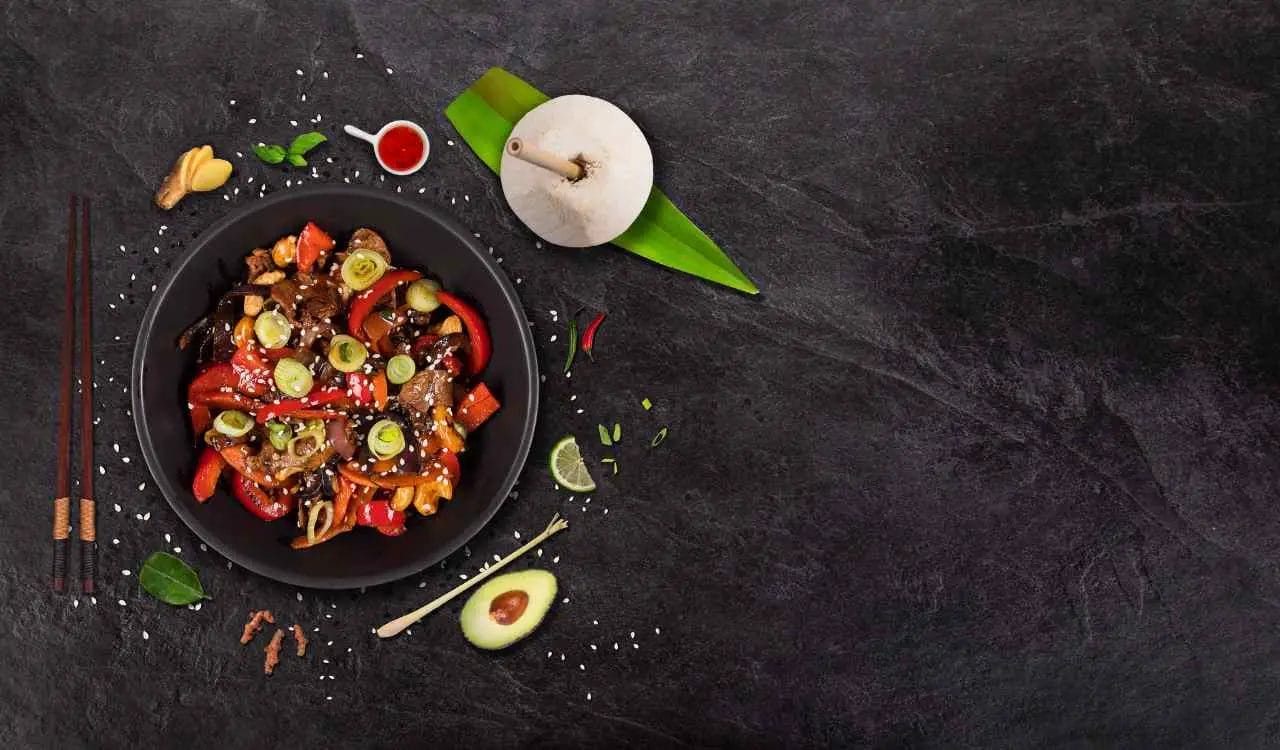Chinese cuisine is renowned for its diverse range of flavors and regional specialties. Among the popular beef dishes in Chinese cuisine, Mongolian Beef, Hunan Beef, and Szechuan Beef hold a special place.
Understanding the differences between these dishes is essential for both food enthusiasts and those seeking an authentic culinary experience.
In this article, we will delve into the unique characteristics of Mongolian Beef, Hunan Beef, and Szechuan Beef, exploring their origins, flavor profiles, cooking techniques, and regional variations.
I. Mongolian Beef: Rich History and Distinctive Flavors
Mongolian Beef has gained popularity as a classic Chinese-American dish, but its origins can be traced back to Mongolia, a land known for its robust nomadic traditions and unique culinary heritage. The dish showcases a harmonious blend of flavors that are both savory and slightly sweet.
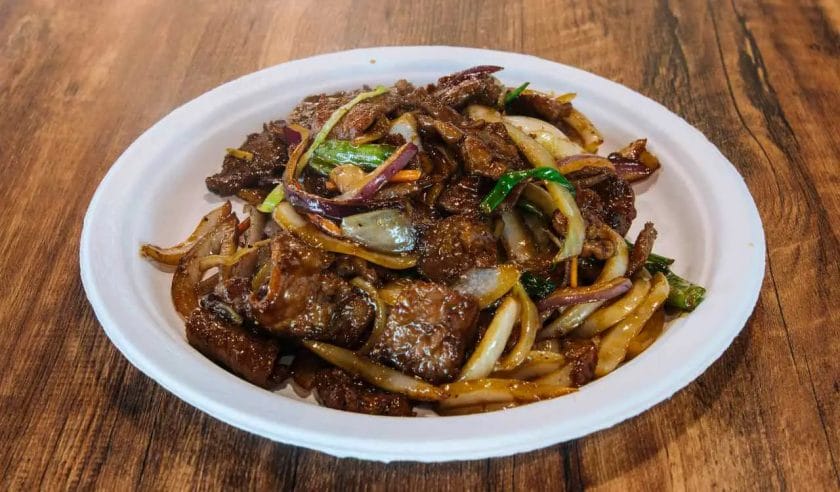
Origins and Cultural Significance
Mongolian Beef draws inspiration from the Mongolian nomadic culture, where meat is a staple food.
However, it’s important to note that the dish does not have a direct connection to traditional Mongolian cuisine. Instead, it was developed in Chinese-American restaurants, primarily influenced by the flavors and ingredients found in the Inner Mongolian region.
Key Ingredients and Flavor Profile
The key ingredients in Mongolian Beef typically include thinly sliced beef, usually flank steak or sirloin, soy sauce, brown sugar, garlic, and ginger.
These ingredients come together to create a distinctively rich and savory flavor profile, complemented by a hint of sweetness from the brown sugar. The use of garlic and ginger adds depth and aromatic notes to the dish.
Cooking Methods and Techniques
Mongolian Beef is traditionally prepared using a stir-frying technique, which involves quickly cooking the thinly sliced beef in a hot wok or skillet with a small amount of oil.
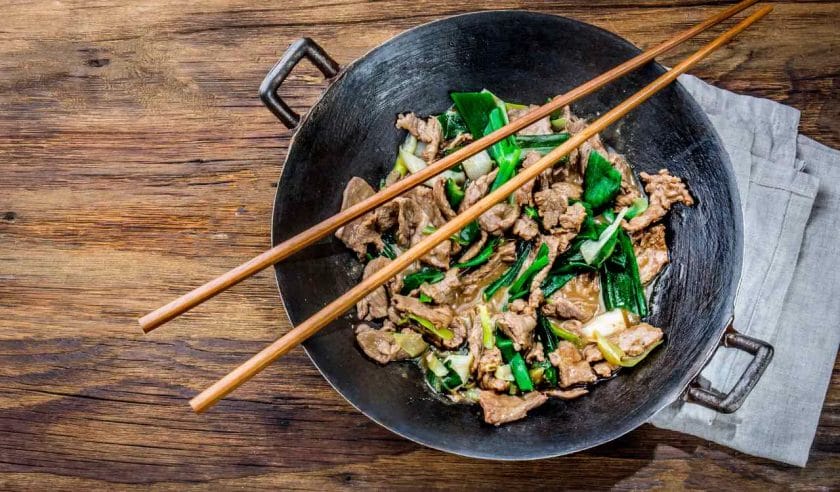
The beef is seared until browned and then combined with the sauce, allowing the flavors to infuse into the meat. This cooking method ensures that the beef retains its tenderness and succulence.
Notable Characteristics
One notable characteristic of Mongolian Beef is its velvety texture, achieved by marinating the meat and coating it in a cornstarch-based mixture before cooking.
This technique not only enhances the tenderness of the beef but also helps create a glossy and flavorful glaze.
Popular Variations and Regional Adaptations
While the Mongolian Beef commonly found in Chinese-American restaurants follows a standard recipe, variations exist within the Inner Mongolian region and across different Chinese provinces.
Some adaptations may incorporate additional ingredients such as green onions, bell peppers, or chili peppers, offering subtle variations in flavor and texture.
II. Hunan Beef: Bold Flavors and Spicy Heat
Hunan cuisine, originating from the Hunan province in central China, is known for its bold and fiery flavors. Hunan Beef is a prime example of this culinary tradition, characterized by its spicy and robust taste.
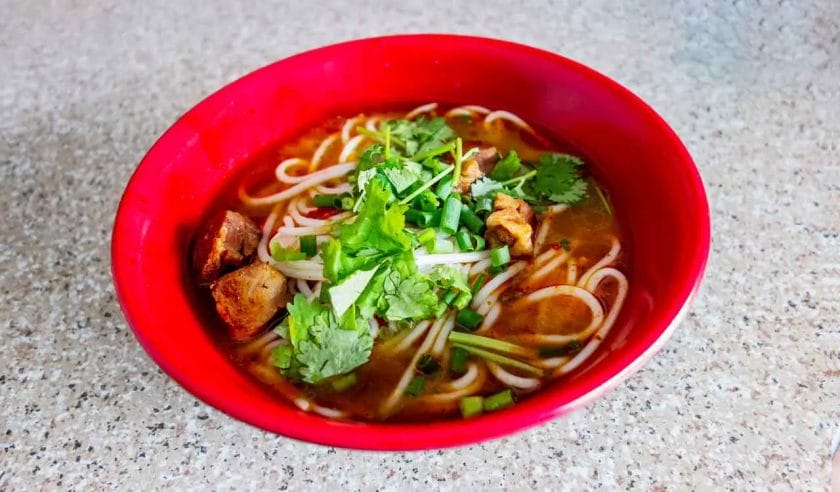
Historical Background and Regional Influences
Hunan cuisine has a long history and is deeply influenced by the agricultural practices and abundant natural resources of the region.
The use of chili peppers, garlic, and fermented ingredients is prevalent in Hunan cuisine, contributing to its distinct flavor profile.
Key Ingredients and Flavor Profile
Hunan Beef prominently features sliced beef, typically flank steak or tenderloin, paired with a medley of ingredients like chili peppers, garlic, ginger, and soy sauce. The liberal use of chili peppers imparts a fiery heat to the dish, while garlic and ginger add aromatic and pungent notes. The result is a robust and spicy flavor profile that is sure to tantalize the taste buds.
Spiciness and Heat Levels
Compared to Mongolian Beef, Hunan Beef is considerably spicier. The generous use of chili peppers, including the famous Hunanese chili, adds a fiery kick to the dish.
However, it’s worth noting that the level of spiciness can vary depending on personal preference and the specific recipe followed.
Notable Characteristics
Hunan Beef stands out with its vibrant red color and bold flavors. The combination of spicy, savory, and slightly tangy elements creates a well-rounded taste that lingers on the palate.
The dish often incorporates a variety of textures, with the beef being tender and succulent, and the vegetables providing a satisfying crunch.
Regional Variations and Famous Hunan Beef Dishes
Within Hunan province, variations of Hunan Beef can be found due to differing local tastes and available ingredients.
Some popular regional variations include Hunan Spicy Beef, Hunan Black Bean Beef, and Hunan Beef with Pickled Vegetables. These dishes showcase the versatility and adaptability of Hunan cuisine.
III. Szechuan Beef: Numbing Sensation and Exciting Flavors
Szechuan cuisine, hailing from the Sichuan province in southwestern China, is renowned for its bold and complex flavors. Szechuan Beef is a prime example of this cuisine, known for its unique combination of spiciness and a numbing sensation.
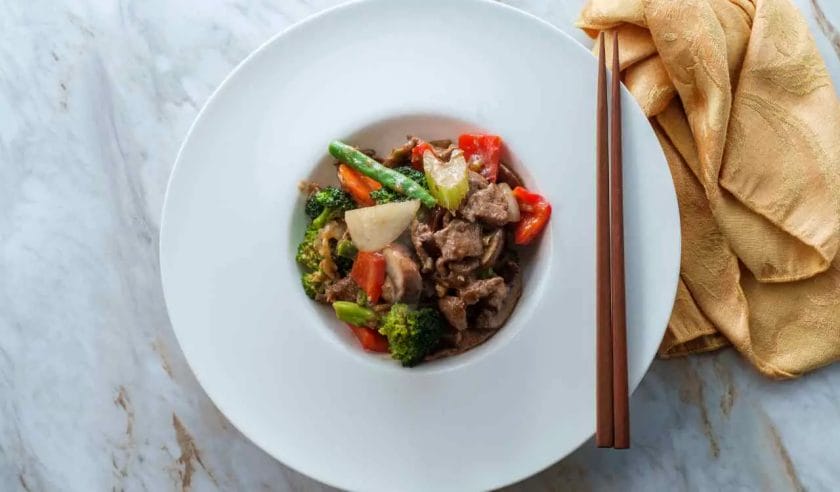
Overview of Szechuan Cuisine and Global Impact
Szechuan cuisine has gained worldwide popularity due to its distinctive flavors and the use of Szechuan peppercorns, which impart a numbing sensation known as “málà.” The cuisine is characterized by its liberal use of chili peppers, garlic, ginger, and fermented ingredients, creating a symphony of flavors.
Key Ingredients and Flavor Profile
Szechuan Beef typically features tender slices of beef, such as flank steak or ribeye, along with a flavorful blend of ingredients. Chili peppers, Szechuan peppercorns, garlic, ginger, soy sauce, and fermented bean paste are often used to achieve the signature flavors of Szechuan cuisine. The combination of spiciness, numbing sensation, and umami flavors makes Szechuan Beef a thrilling culinary experience.
Notable Use of Szechuan Peppercorns
One of the defining characteristics of Szechuan cuisine is the use of Szechuan peppercorns. These tiny reddish-brown peppercorns have a unique flavor profile that includes a citrusy, floral aroma coupled with a numbing and tingling sensation on the tongue. In Szechuan Beef, the Szechuan peppercorns contribute to the dish’s distinct taste and mouthfeel.
Notable Characteristics
Szechuan Beef is known for its explosive flavors and the balance between heat and numbing sensations. The beef is often marinated and stir-fried over high heat, resulting in a tender texture with a slightly crispy exterior. The dish combines the richness of the beef, the heat of the chili peppers, and the unique numbing sensation of the Szechuan peppercorns.
Famous Szechuan Beef Dishes and Regional Adaptations
Szechuan cuisine offers a range of beef dishes, each with its own twist and variations. Some popular Szechuan Beef dishes include Kung Pao Beef, Dry-Fried Beef, and Beef in Chili Oil. These dishes showcase the versatility of Szechuan cuisine and the creativity of chefs in different regions.
IV. Comparisons and Contrasts: Understanding the Distinctions
Now that we have explored the individual characteristics of Mongolian Beef, Hunan Beef, and Szechuan Beef, let’s compare and contrast these three popular Chinese beef dishes.
Flavor Profiles: Sweet and Savory (Mongolian Beef) vs. Spicy and Bold (Hunan Beef and Szechuan Beef)
Mongolian Beef is known for its balance of savory and slightly sweet flavors, while Hunan Beef leans towards bold and spicy flavors. Szechuan Beef takes it a step further with its combination of spiciness, numbing sensations, and umami-rich flavors.
Heat Levels: Mild (Mongolian Beef) vs. Spicy (Hunan Beef and Szechuan Beef)
Mongolian Beef typically offers a mild heat level, making it suitable for those who prefer a milder spice. In contrast, both Hunan Beef and Szechuan Beef showcase a higher level of spiciness. Hunan Beef’s spiciness is known for its fiery kick, while Szechuan Beef adds the unique numbing sensation from the Szechuan peppercorns.
Use of Ingredients: Garlic, Ginger, and Soy Sauce (Mongolian Beef) vs. Chili Peppers, Garlic, and Fermented Ingredients (Hunan Beef and Szechuan Beef)
Mongolian Beef relies on ingredients like garlic, ginger, and soy sauce for its distinctive flavors. Hunan Beef and Szechuan Beef, on the other hand, feature chili peppers and garlic as prominent ingredients, with Szechuan Beef incorporating the numbing effect of Szechuan peppercorns and fermented bean paste.
Cooking Techniques: Stir-Frying (Mongolian Beef) vs. Dry Frying and Braising (Hunan Beef and Szechuan Beef)
Mongolian Beef is typically prepared using stir-frying, a quick cooking method that retains the beef’s tenderness. Hunan Beef often involves dry frying the beef before combining it with the sauce, while Szechuan Beef may employ braising techniques to infuse the meat with rich flavors.
Regional Variations and Adaptations
Each of these dishes has regional variations and adaptations that showcase the culinary diversity within Chinese cuisine. Mongolian Beef may have variations within the Inner Mongolian region, while Hunan Beef and Szechuan Beef have different regional specialties and famous dishes within their respective provinces.
V. Conclusion: Exploring the Flavors of Chinese Cuisine
In conclusion, Mongolian Beef, Hunan Beef, and Szechuan Beef are three distinct beef dishes that showcase the rich culinary traditions of China. Understanding the differences between these dishes is essential for both food enthusiasts and those seeking an authentic Chinese dining experience.
We have explored the origins, flavor profiles, cooking techniques, and regional variations of each dish. Mongolian Beef offers a balance of sweet and savory flavors, while Hunan Beef tantalizes the taste buds with bold spiciness. Szechuan Beef introduces a unique combination of spiciness and the numbing sensation of Szechuan peppercorns.
By understanding the distinctions between these dishes, readers can make informed choices based on their preferences and embark on a culinary journey that celebrates the diverse flavors of Chinese cuisine.
Whether you decide to try these dishes at a restaurant or cook them in your own kitchen, the flavors of Mongolian Beef, Hunan Beef, and Szechuan Beef are sure to provide a memorable dining experience. So, grab your chopsticks and savor the flavors of Chinese culinary excellence. Happy eating!
Frequently Asked Questions:
Are Mongolian Beef, Hunan Beef, and Szechuan Beef authentic Chinese dishes?
While these dishes are popularized in Chinese cuisine, it’s important to note that Mongolian Beef, in particular, is not directly related to traditional Mongolian cuisine. It was developed in Chinese-American restaurants.
Hunan Beef and Szechuan Beef, on the other hand, have their roots in their respective Chinese provinces and showcase authentic regional flavors.
Is Mongolian Beef spicy?
Mongolian Beef is typically not known for being spicy. Its flavor profile leans more towards a savory and slightly sweet taste rather than spiciness.
However, it’s worth noting that variations of Mongolian Beef may incorporate chili peppers or other spices to add a hint of heat.
Can I adjust the spiciness level in Hunan Beef and Szechuan Beef?
Yes, the spiciness level in both Hunan Beef and Szechuan Beef can be adjusted according to personal preference.
If you prefer milder flavors, you can reduce the amount of chili peppers or use less spicy varieties of peppers. However, keep in mind that reducing the spiciness may alter the authenticity and overall flavor profile of the dish.
What are some common substitutes for Szechuan peppercorns?
If Szechuan peppercorns are not available, you can try using black peppercorns as a substitute, although it won’t provide the unique numbing sensation associated with Szechuan cuisine.
Another option is to use a combination of ground black pepper and coriander seeds to mimic the flavor profile to some extent.
Can I make these dishes vegetarian or vegan?
Yes, it is possible to make vegetarian or vegan versions of these dishes. For Mongolian Beef, you can replace the beef with seitan, tofu, or textured vegetable protein (TVP).
In Hunan Beef and Szechuan Beef, you can use tofu, tempeh, or a variety of vegetables as the main ingredient. Adjust the seasonings and sauces accordingly to maintain the flavors of the original dishes.
Are there any gluten-free options for these dishes?
Yes, you can make gluten-free versions of these dishes by using gluten-free soy sauce or tamari instead of regular soy sauce.
Ensure that other ingredients, such as oyster sauce or hoisin sauce, are also gluten-free or find suitable gluten-free alternatives.
What are some recommended side dishes to serve with these beef dishes?
Common side dishes to accompany these beef dishes include steamed rice, fried rice, noodles (such as chow mein or lo mein), stir-fried vegetables, and Chinese-style pickled vegetables. These sides provide a balance of textures and flavors that complement the beef dishes.
Where can I find authentic Mongolian Beef, Hunan Beef, or Szechuan Beef?
Authentic Mongolian Beef, Hunan Beef, and Szechuan Beef can typically be found in Chinese restaurants that specialize in regional cuisines.
It’s recommended to explore Chinese communities or areas known for their authentic Chinese dining options. Reading reviews and seeking recommendations from locals can help guide you to the best establishments for these specific dishes.

